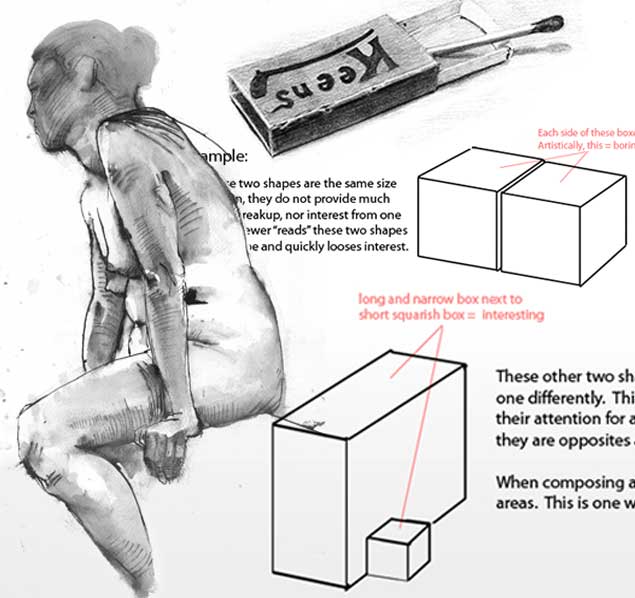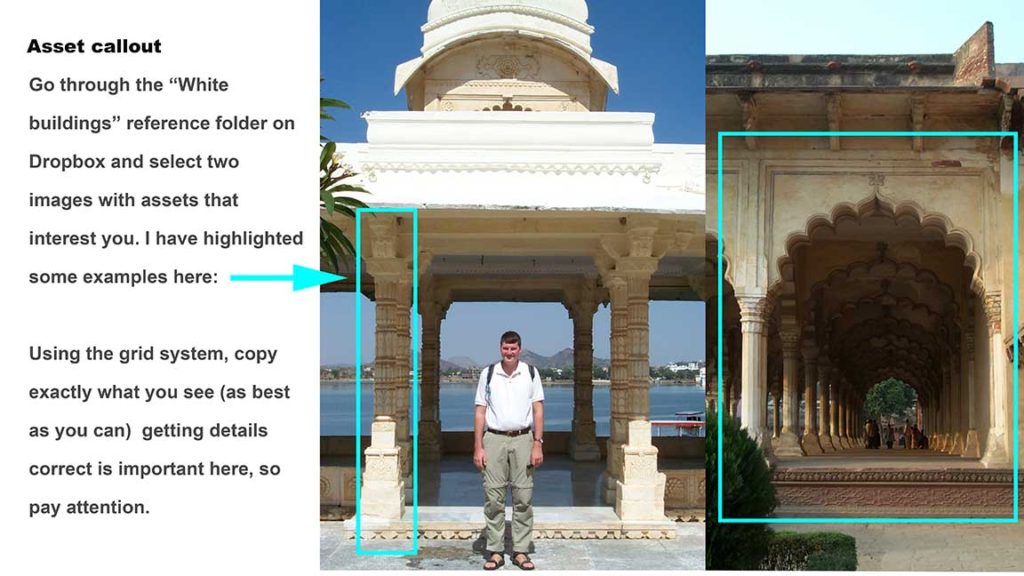Question submitted by Huran E.

Hey Eliott,
I’m trying to teach myself drawing and painting, but I’m incredibly confused as to where to “start” and what exercises to practice. Since there is so much content on the internet, I kinda feel overwhelmed. For now I’m switching daily between anatomy and environments. My daily routine looks like this:
Environment Day:
- 1 page of landscape sketches from imagination (pencil)
- 1 landscape master study
- 1 page perspective exercises from Scott Roberts how to draw book
- 3 quick photo studies (B&W to improve on values)
Anatomy Day:
- upper body atm – drawing the skeleton and muscles
- 2 pages of drawing hands (using my own hands as reference)
- 2 pages of gesture drawings from photos
What do you think about this? Maybe I’m doing the wrong exercises or approaching them the wrong way I don’t know. :/
Cheers! Harun
Hey Harun,
Its worth mentioning that most companies will hire you for environments OR characters.. but usually not both. If I were you I might focus on one or the other. By trying to learn everything, you can’t focus on anything. You’ve heard the phrase: “Jack of all trades… Master of none”…
That said, as artists we are naturally curious and I think it’s great that you want to learn multiple things for yourself (just relaize that you might not get hired for them). I like your daily routine, but would drop 2 of the “drawing from imagination” environments and replace them with drawing from real-life. As an example, here’s an exercise I like to give my students that aims at improving their visual library while challenging them to think creatively.
The first assignment: Draw existing example of real world architecture
Spend some time gathering photo reference of far away/exotic locals that interest you (like overgrown temples, medieval castles, Japanese shrines, whatever.). Then draw exactly what you see in the reference photo without tracing or sampling the image. (Setting up and referencing a grid system works wonders here). The goal is to identify the architectural elements unique to specific region and understand the aesthetics behind them.
Here is an example of what the first assignment looks like:

The second part of the assignment is to use what you learned from the first to fabricate your own environment (draw imaginary examples of these genres with a bit of fantasy woven in, but not so much that the aesthetic disappears). The goal here is to practice drawing specific architectural elements needed to ground your image within a certain time period (or look influenced by it) all while using your own creativity to make something new.
That’s all they do for 11 weeks straight. Each week, they explore a new region of the world and by the end of the semester, can start referencing multiple locations, cultures and aesthetics into their own work. I suggest you give it a try. Unfortunately, I don’t have a handy assignment for characters since I only teach environments, but you could, in theory, do the same exercise, but look at fashion and culture instead of environments.
Unfortunately we can’t learn at an immediate rate (like in the Matrix). This means that artistic growth is measured in small, but consistent improvements. If you learn something each day (no matter what it is) then you are headed in the right direction. If you like environments, then just focus on that fro a while. Give yourself a few assignments, then work through each one.
If you need something super efficient or structured, you might want to consider taking an online class or two. Those can be great at getting you to focus on specific topics. Check out the recommended educational resources section on our blog to get you started.
Hope that helps.
-Eliott


